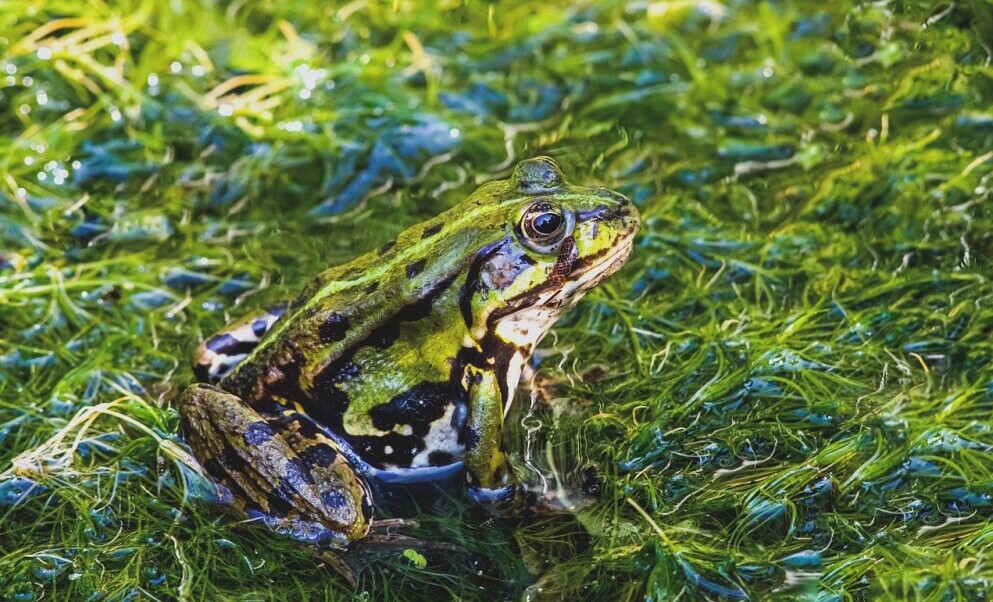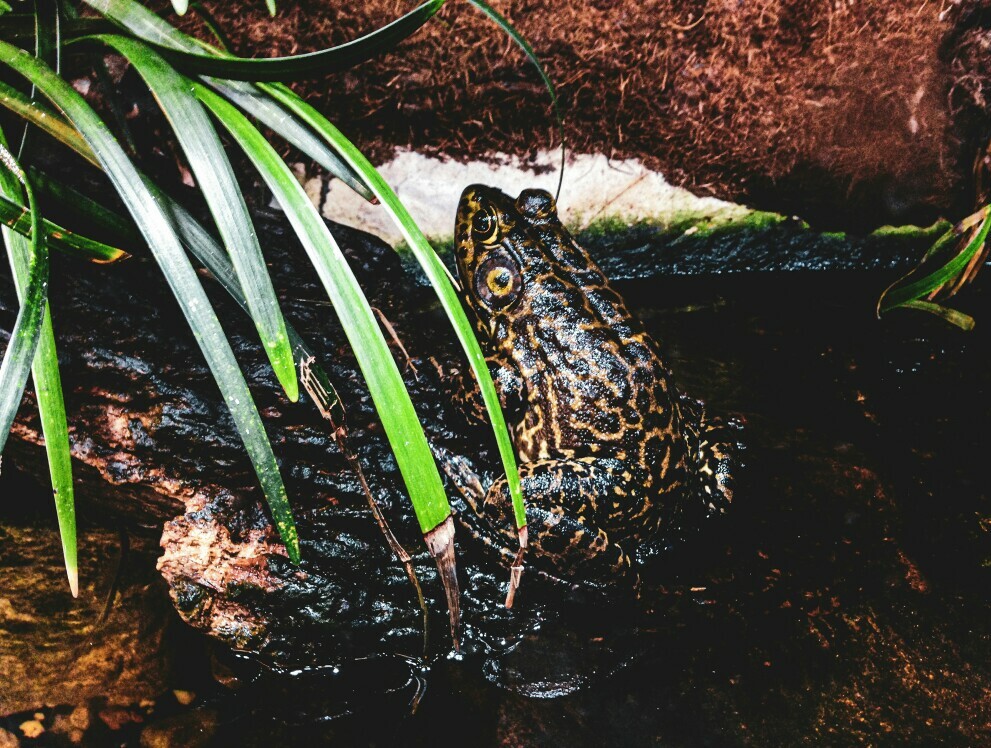I’m fascinated by some of nature’s most captivating survival tactics. One that is truly intriguing is How frogs and toads camouflage themselves.
These amphibians are skilled illusionists, seamlessly blending into their environments to elude predators and snag prey. You’re going to find out about the fascinating ways these creatures use their unique abilities to survive in the wild.

This isn’t just about a frog’s ability to hide; it’s also about its significance for survival. Predators constantly scour for their next meal, and being undetectable can mean the difference between life and death for our amphibian friends. I’m here to help you understand the critical roles these mechanisms play in the lives of frogs and toads.
Now, before we get into the specifics of their camouflage strategies, it’s important to recognize the distinction between frogs and toads. Though similar, there are key differences in their skins, habitats, and behavior that influence their respective abilities to hide in plain sight. In my opinion, appreciating this difference is crucial for grasping the nuances in their approaches to camouflage.
The Art of Blending In: Assessing Frog and Toad Habitats
You’re going to find out about the ingenious ways frogs and toads make themselves at home – literally. These creatures have honed the art of camouflage to perfection, allowing them to become one with their environment. This isn’t just about a few species; it’s about a plethora of amphibians with a myriad of clever disguise strategies.
In the thick of lush rainforests, you’ll find frogs that look like splashes of emerald green, perfectly mimicking the glossy leaves they inhabit. Venture into the arid scrublands, and you’ll stumble upon toads seamlessly synchronizing their bumpy, earth-toned skin with the dry, cracked soil.
Choose something that resonates with you, whether it’s the streamlined green tree frog in a swaying canopy or a warty toad settled patiently in leaf litter. Each habitat presents its unique challenges and opportunities for camouflage. Frogs and toads don’t just survive in their environment; they actively engage with it, altering their appearance to evade predators and enhance their predatory tactics.
So here’s a picture of some of these habitats: floating plants hosting frogs in ponds, toads tucked away under the desert’s twilight, or the forest floor littered with fallen leaves offering refuge. Each setting is a stage for these amphibians to display their camouflage prowess.
A lot is happening very quickly as we realize the complexity of these creatures’ approaches to survival. The strategy these frogs and toads leverage isn’t just fascinating; it’s a testament to the power of evolution and adaptation.

Color and Pattern: The Canvas of Camouflage
If you’re keen to understand how frogs and toads stay hidden, you need to zoom in on their skin. It’s a live canvas that changes with their surroundings. Special cells called melanophores, xanthophores, and iridophores play a huge part in this. They’re responsible for the different pigments and sparkles you see on amphibian skin. These cells adjust to various factors like light and temperature, blending the frog or toad into the backdrop of nature.
Imagine walking through a lush forest or a marshy pond. What strikes you is the harmony of colors, the way everything seems to fit just right. That’s exactly how frogs and toads use their skin colors and patterns. When faced with the need to hide, frogs can darken or lighten their skin to match the rotting leaves, the green foliage, or the murky waters they occupy. It’s not just a matter of color – the patterns on their skin are like nature’s own brand of camouflage fatigues, breaking up their outline among leaves, twigs, and water reflections.
Now you’re probably wondering, ‘Can frogs and toads switch colors quickly?’ Yes, they can, but it’s not instant like a light switch. It’s a process that can take minutes or hours depending on the species and the stimulus. Some amphibians can adjust their coloration seasonally, while others do it in response to immediate threats. This ability is crucial, as it doesn’t just help them vanish from the sight of predators but also plays a key role in temperature regulation and signaling during mating.
In the next section, I’m going to take you beyond the visuals. You’ll learn how the texture of their skin and even certain behaviors contribute to the disappearing act. It’s not just what you see but also what you don’t that makes these creatures the ultimate escape artists.

Beyond Color: Texture and Behavior in Camouflage
I’m going to delve into how frogs and toads don’t just rely on color to stay hidden; texture plays a crucial role, too. The rough, warty skin of a toad, for example, isn’t just for show. It mimics the texture of its surroundings, like tree bark or earth, making it nearly invisible to both prey and predators.
It’s not only about having the right texture. These amphibians are also experts in certain behaviors that enhance their camouflage. Take the common frog; it will often remain completely still, blending into the leaf litter.
Timing is everything when it comes to camouflage. If a predator is near, a frog or toad will often freeze right in place, using their indistinguishable appearance as their best defense. It’s this combination of physical adaptations and smart, situational behaviors that really elevates their abilities to hide in plain sight.
Now you’re going to find out about the darker side of camouflage – the challenges these creatures face as their environments change. As fascinating as their camouflage tactics are, external threats like habitat destruction and climate change are making it harder for them to stay hidden.
Steering Through Survival: The Plight of Camouflaged Amphibians
I’m going to round out our exploration of frog and toad camouflage with a pivotal focus: their survival challenges and the conservation efforts that offer a beacon of hope. This isn’t just about their innate ability to hide; it’s also about how we can help sustain the ecosystems that nurture these species.
Habitat destruction stands as the chief culprit undermining the evolutionary art of camouflage. When their natural environments are altered or decimated, frogs and toads can’t just rely on their color-changing skin or mimicry talents. You might find them struggling to adapt to the quick changes, making them more visible to predators and reducing their chances of survival.
Climate change throws another wrench into their intricate survival mechanisms. As temperatures shift and weather patterns become unpredictable, these changes can affect the availability of suitable habitats and force amphibians to venture into riskier areas to survive.
But all’s not lost—conservation initiatives are hard at work. Wetland restoration projects, anti-pollution laws, and captive breeding programs aim to turn the tide for these small yet significant creatures. By maintaining the integrity of their natural habitats, we ensure that frogs and toads continue to thrive and dazzle us with their camouflage skills.
I strongly encourage you to get involved or support local and global conservation efforts. It’s through our combined actions that we can safeguard the diverse tapestry of life on Earth. Don’t worry too much about the size of your contribution; every little bit helps in the fight to protect these fascinating animals and their habitats.
